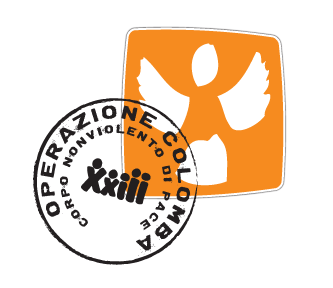Sarura - Sumud Freedom Camp
Hammoudi comes out from the cave and looks at the panorama around him: the sunset paints the hills in purplish color, the wind blows gently spreading the scent of narghile. It seems a magical moment if it were not for the Israeli outpost that arrogantly breaks the harmony of the landscape. The outpost is right in front of Sarura, as if it wanted to make impossible for the Palestinian communities of the area to forget to live under occupation.
Hammoudi’s gaze moves to the cave next door and to what is left of the bathroom built just a bit further, after the Israeli bulldozers demolished it. That’s the third time they’ve put it back together. In the next days they will rebuild it, and probably in a few days, weeks or months, the bulldozers will come back. From the cave next door he hears his uncle’s voice telling the stories about the old village of Sarura, when it was still inhabited by families of shepherds, the same stories that in turn his father told him. The cave was uninhabited for years, the work to settle it up has been long.
Hammoudi remembers the first time he set foot on it: it was just a hole full of dust and dirt, unthinkable that anyone could live there. Then they enlarged and paved it, they built an outdoor bathroom and a large courtyard with a bench wall surrounding it. During the works it was Hammoudi’s and his mates’ house: for two years they lived in that cave. They organized themselves to maintain a permanent presence, so that everyone could visit their families, go to university, school, work or just take a break. The few times that the garrison had been uncovered, even for a few hours, the settlers had raided the cave and destroyed everything. For two years they were attacked, during the night they were woken up by soldiers, they were arrested, they tried to prevent the confiscation of the generators, the working tools, the mattresses on which they slept. From the beginning the military tried in any way to hinder them, yet Hammoudi and his mates remained until the owners of the cave returned, and works moved to the cave next door.
Sarura was a village included in the plan of Israeli military and civilian occupation, which planned to expropriate the land and displace Palestinian communities of the area; it was uninhabited and lived only in memory, but now it has come back to life. Hammoudi’s gaze moves on the Palestinian flags dancing fiercely in the wind. In the background the outpost of Havat Ma'on stares at Sarura, collecting the memories of the violence and remembering that there will be others; but Sarura, back to life, supports the outpost’s looking, remembering in turn that the nonviolent resistance goes on, and it works.
On May 19, 2017 a coalition of Palestinian, Israeli and international activists revives the village of Sarura, abandoned in the 90s due to settlers’ violence. What was imagined as a temporary action turns into a permanent garrison, lived day and night by South Hebron Hills youth, who is committed to rebuild with own means the caves of the village, to bring back to permanently live the families who had to leave. The Sumud Freedom Camp attracts the attention of the whole area, under permanent aggression by settlers and soldiers, who repeatedly raid, arrest the youths living there and seize what there is inside. From the Sumud Freedom Camp experience, the activist group Youth of Sumud was born, made up of boys and girls from the area, who decided to live in the caves of the village of Sarura, in order to garrison them while waiting for the owners to return. The garrison and the work inside the caves are just a part of the resistance carried out by Youth of Sumud, who begin to share their experience of nonviolent resistance throughout the West Bank.


 OPERAZIONE COLOMBA
OPERAZIONE COLOMBA
